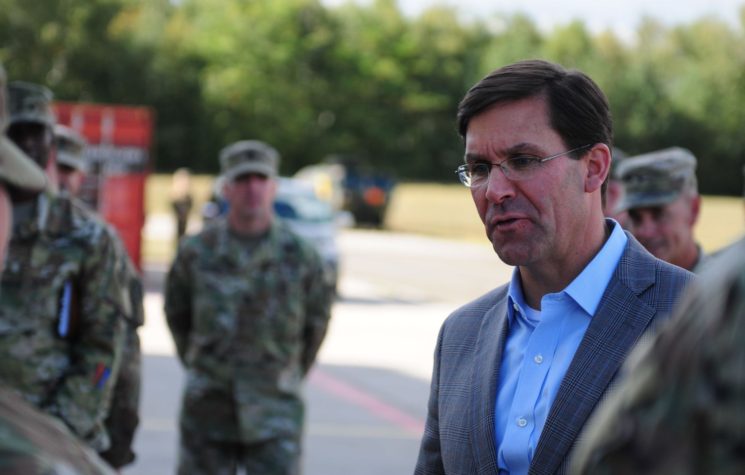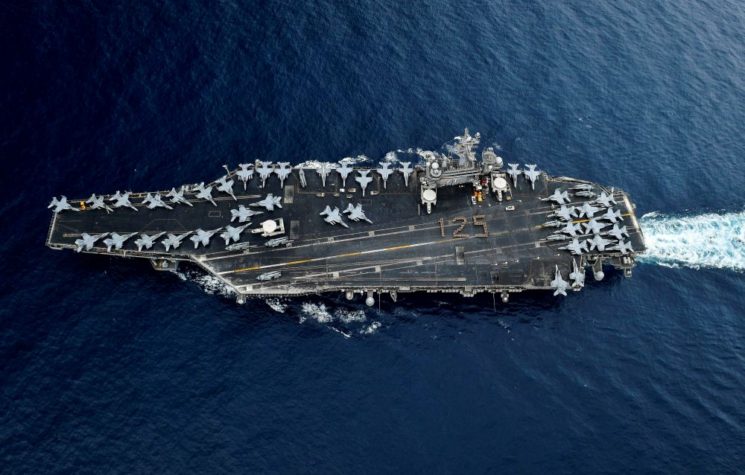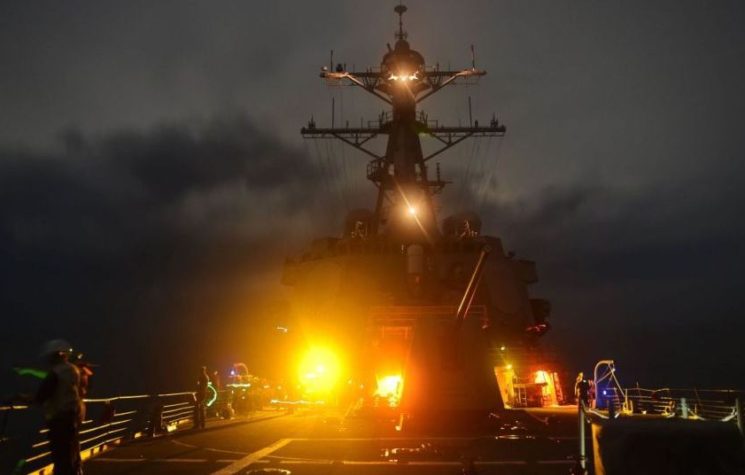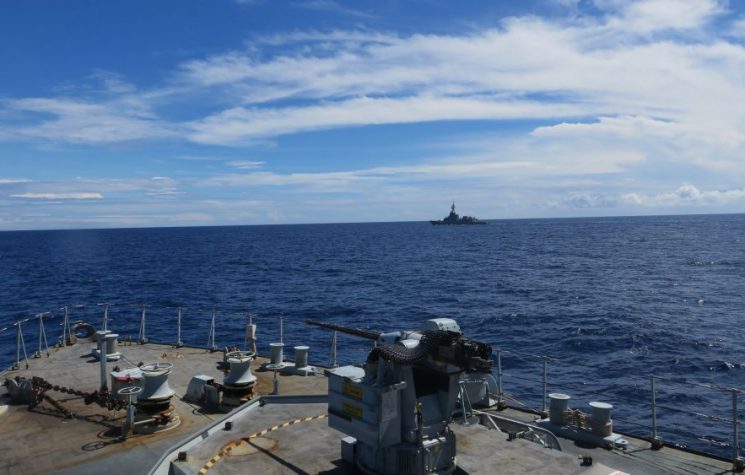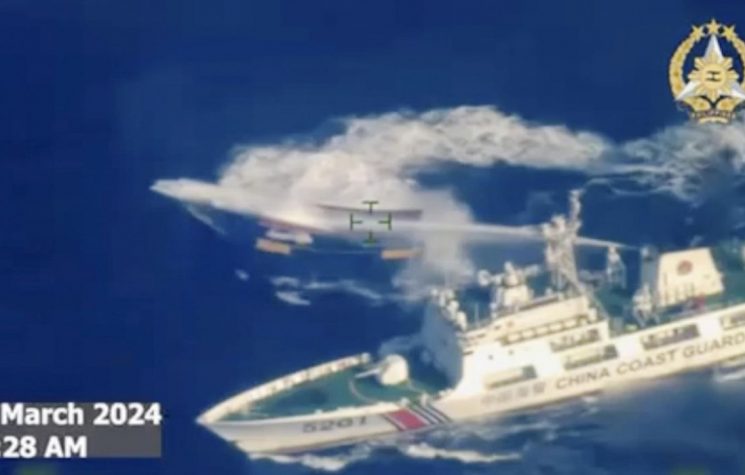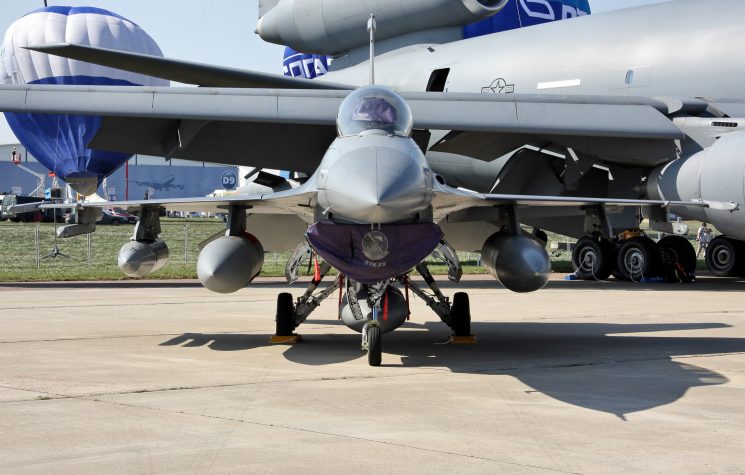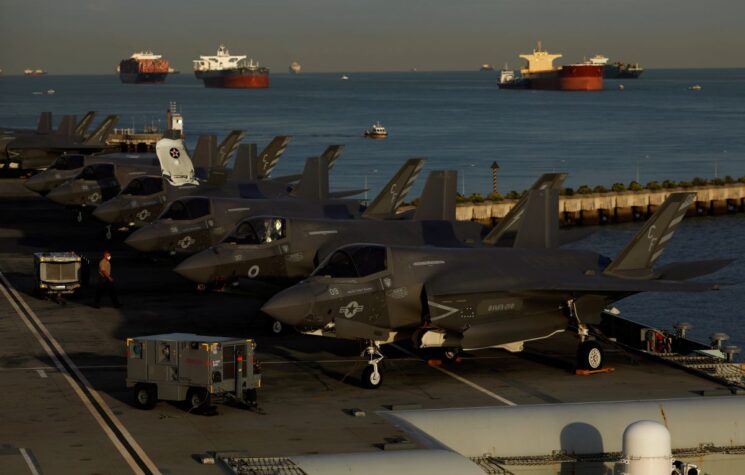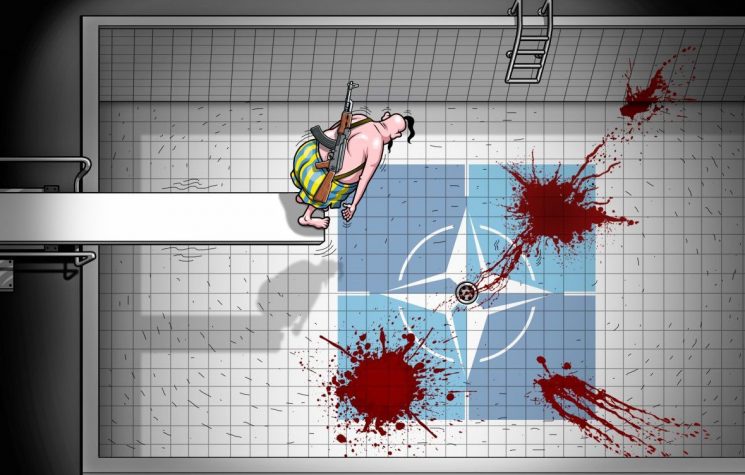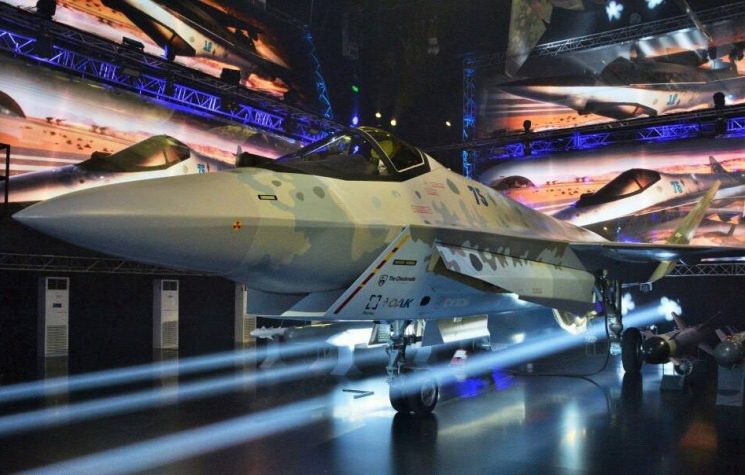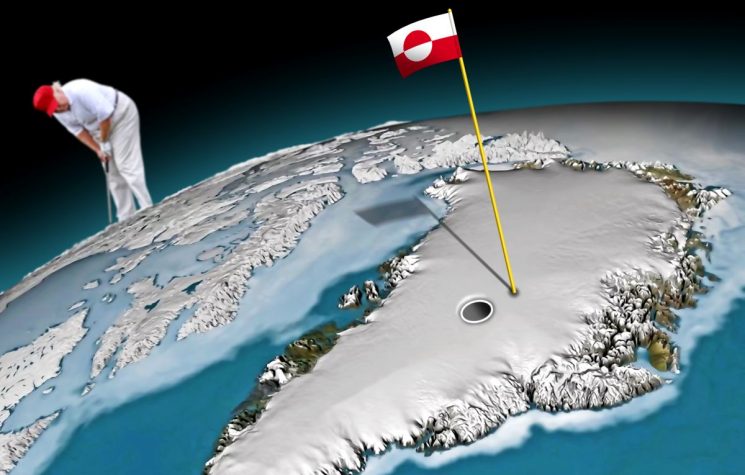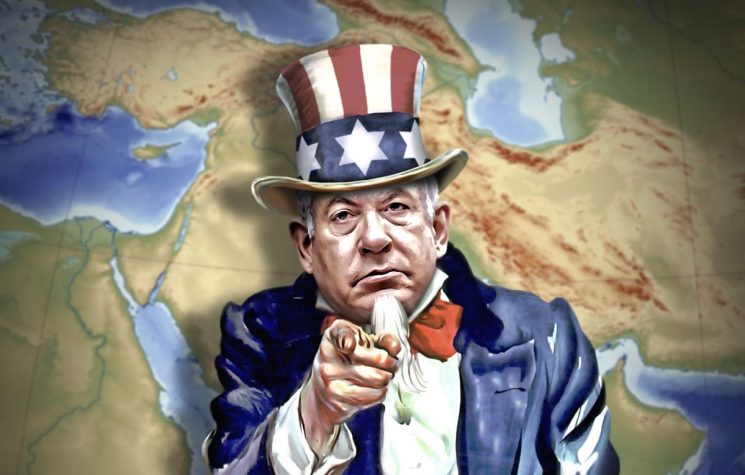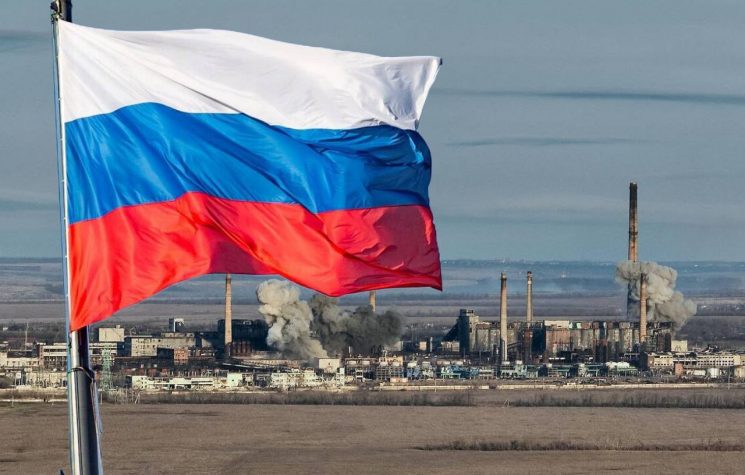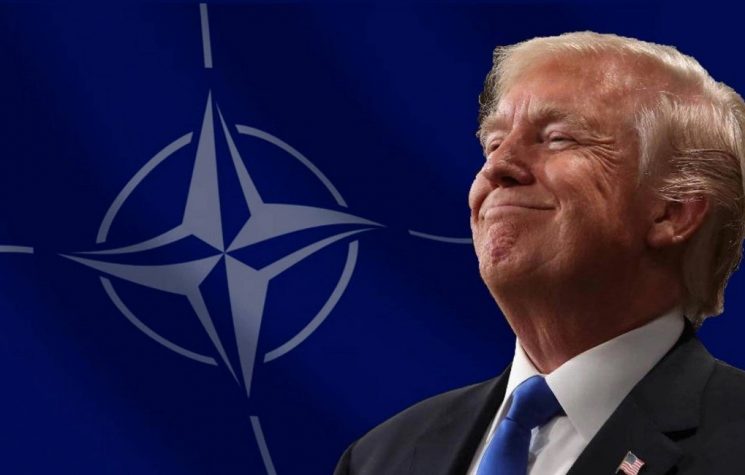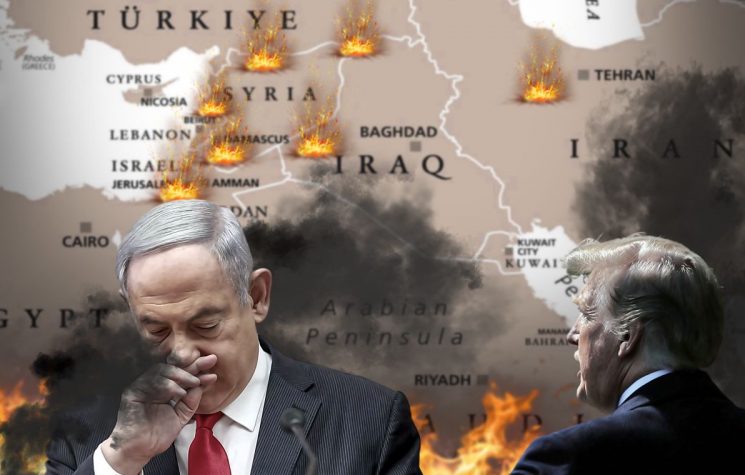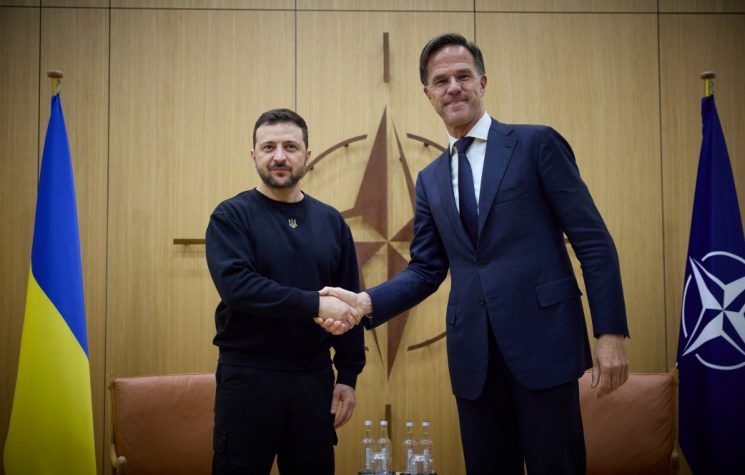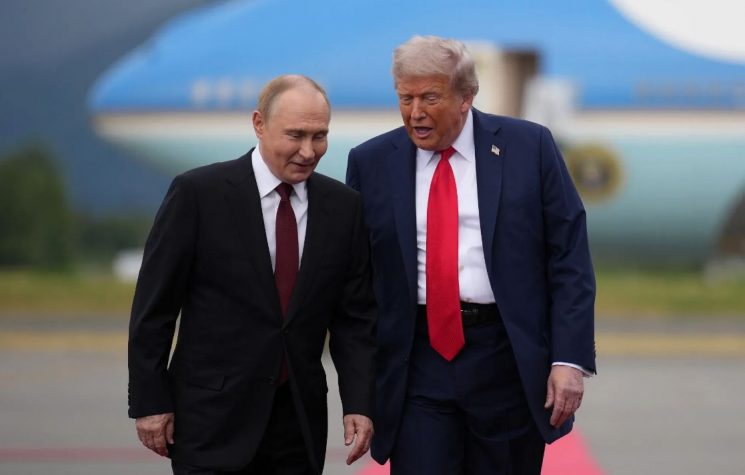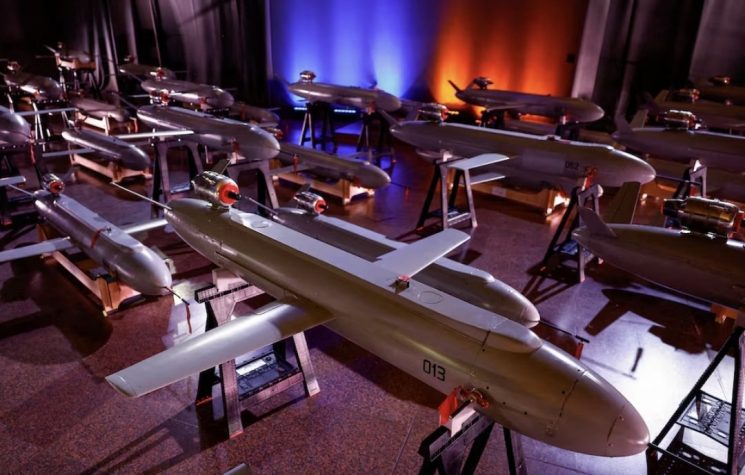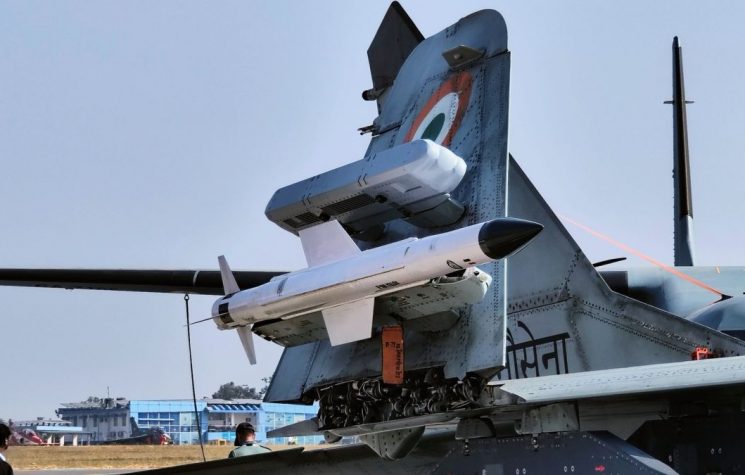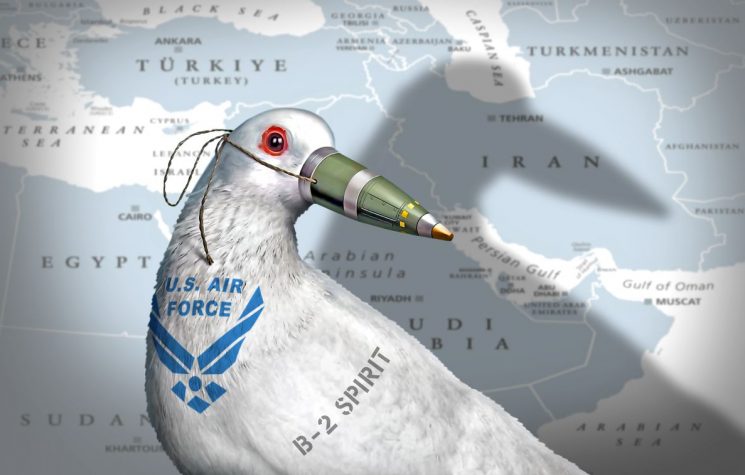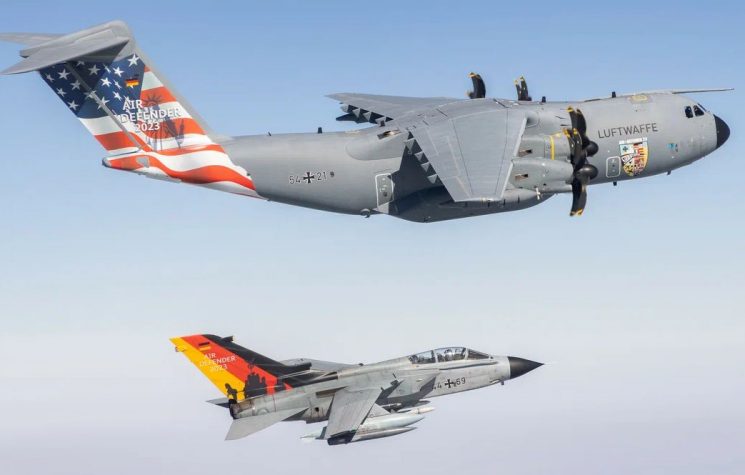On 1 June the US Air Force Times reported that two B-1B Lancer nuclear bombers based in South Dakota had just completed a “long-range training flight” to the Black Sea during which they carried out manoeuvres to practice using “a long-range missile designed to target and destroy enemy ships.” This deployment was “especially important to prepare B-1 crews to counter new and emerging threats and to be ready for a conflict against a major power, as outlined in the Pentagon’s National Defense Strategy.”
The Black Sea mission took place shortly after a US-British naval task force conducted “maritime security operations” for five days in the Barents Sea. They were supported by two electronic warfare aircraft, a Navy P-8A Poseidon and an Air Force RC-135. US Naval Forces Europe announced that the warships held the manoeuvres “to assert freedom of navigation and demonstrate seamless integration among allies.” The commander of the US 6th Fleet stated that “In these challenging times, it is more important than ever that we maintain our steady drumbeat of operations across the European theatre.”
Russia’s Northern Fleet has its headquarters on the Barents Sea, which lies within the Arctic Circle, and it is hardly coincidental that “Russia has the world’s longest Arctic coastline and gets roughly one-quarter of its GDP from activity in the region.” There has never been an incident in which freedom of navigation has been threatened by Russia, and it is in Russia’s best interests – indeed, the world’s best interests – that the region remains tranquil.
Then it was noted that on June 3 four US Air Force B-52 nuclear bombers conducted a mission in which “They flew over the Arctic Ocean and the Laptev Sea, off the northern coast of Siberia.” The commander of US Air Forces in Europe, General Harrigian, declared that the Arctic “is a strategic region with growing geopolitical and global importance, and these Bomber Task Force missions demonstrate our commitment to our partners and allies and our capability to deter, assure, and defend together in an increasingly complex environment. The integration of our bombers across Europe and the Arctic is key to enhancing regional security.”
From 7-16 June the US-Nato military alliance deployed 29 warships and 29 strike, support and electronic warfare aircraft in BALTOPS 2020, the Baltic Operations manoeuvres which have the mission to “demonstrate international resolve to ensure stability in, and if necessary defend, the Baltic Sea region.” There have been no incidents of any sort in the Baltic and the only threat to stability is the increasing number of US-Nato military exercises and operations that are so provocatively conducted in the region.
The picture is emerging of an ever-increasing pace of menacing deployments around Russia’s borders by combat aircraft and ships of the Pentagon which is intent on expanding its global military presence.
On 1 June, during the widespread protest demonstrations in the US, the head of the Pentagon, Mark Esper, declared that the US military was “in full support” of law enforcement authorities and in a telephone link with President Trump and State governors was emphatic that “the sooner that you mass and dominate the Battle Space, the quicker this dissipates and we can get back to the right normal.” The ‘Battle Space’ in Pentagon-speak means the area in which military forces engage in operations against the enemy, and Mr Esper was referring to areas in which citizens of the United States were protesting against their government’s policies.
While Trump was speaking with the governors he told them that General Mark Milley, the Chairman of the Joint Chiefs of Staff, and the country’s senior military figure, was “in charge” of operations against protestors, and emphasised that the governors “have to dominate. If you don’t dominate, you’re wasting your time. They’re going to run all over you, you’ll look like a bunch of jerks. You have to dominate…”
In his address to the nation from the Rose Garden at the White House on the same day, Trump said he was “dispatching thousands and thousands of heavily armed soldiers, military personnel, and law enforcement officers to stop the rioting,” and just as the Pentagon is being ordered by President Trump to “dominate” the people of America, so it is deploying combat forces round the world to try to dominate the skies and waters around Russia and China.
While the Pentagon was deploying warships and combat aircraft in the Battle Spaces of the Arctic and the Baltic and Black Seas it hadn’t forgotten its confrontation policy regarding China. The guided missile destroyer USS Mustin was sent to the South China Sea on 28 May, following an overflight of the area two days previously by another two B-1B Lancer bombers in a mission that Pacific Air Forces Command announced was intended “to demonstrate the Air Force’s ability to operate anywhere international law allows, at the time and tempo of our choosing.”
The US Navy’s announcement concerning the USS Mustin’s operations is that its policy in the region “is no different than that of any other area around the world where the international law of the sea as reflected in the 1982 Law of the Sea Convention provides for certain rights and freedoms and other lawful uses of the sea to all nations. The international community has an enduring role in preserving the freedom of the seas, which is critical to global security, stability, and prosperity.”
Quite so. But there has never been any interference by China in the passage of any foreign merchant vessel through the South China Sea, and nor will there ever be, because it is a vital economic sea lane for China’s trade.
The claims of littoral states concerning sovereignty over island chains in the China Sea have nothing whatever to do with the United States, and the most absurd feature of Washington’s belligerent stance is continual reference to the UN Convention on the Law of the Sea – simply because the United States refuses to ratify the Convention. It is not a party to the international agreement on the Law of the Sea, yet uses it to attempt to justify extension of Battle Space by carrying out provocative overflights and naval confrontations. Then, to cap it all, on 1 June Washington sent a letter to the UN Secretary General “Protesting China’s Unlawful Maritime Claims”, and stating that the U.S. rejects them because they are “inconsistent with international law as reflected in the 1982 Law of the Sea Convention.”
Concurrently on 1 June President Trump declared to American citizens that he is “your president of law and order,” while the New York Times carried the headline that “Twin Crises and Surging Anger Convulse U.S.”. There is frantic confusion in Washington, where the federal government has demonstrated incompetence in dealing with both the pandemic and the civil unrest which is at a level not seen for thirty years. In spite of the violent chaos enveloping the nation and the ongoing medical emergency the Pentagon continues to be intent on surging further in confrontation with China and Russia. The Battle Space is expanding and the likelihood of conflict is increasing. It is difficult to believe that this is what is wanted by the American people who desire only to live in tranquillity – which they will never experience in a Battle Space.








